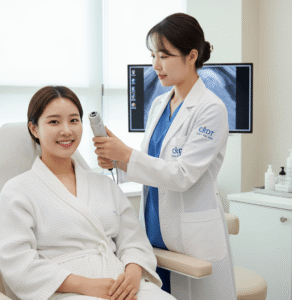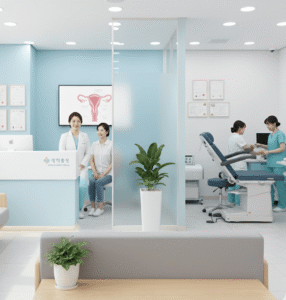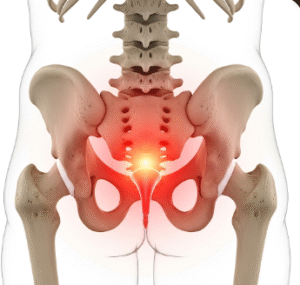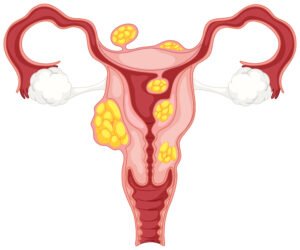Overview
Choanal atresia is a rare congenital condition in which the back of the nasal passage (choana) is blocked, usually by bone or soft tissue. This obstruction prevents proper airflow through the nose and can cause breathing difficulties, especially in newborns who primarily breathe through their noses. In Korea, early detection and advanced surgical interventions have significantly improved outcomes for infants born with this condition.
What is Choanal Atresia?
Choanal atresia occurs when one (unilateral) or both (bilateral) nasal passages are blocked due to abnormal development during fetal growth. Bilateral choanal atresia is a medical emergency in newborns, as it can cause life-threatening breathing difficulties, while unilateral cases may remain undiagnosed until later in childhood.
Symptoms
- Bilateral choanal atresia (severe):
- Cyanosis (turning blue) that improves when crying
- Difficulty breathing, especially while feeding
- Noisy breathing or inability to pass a nasal catheter
- Unilateral choanal atresia (milder):
- Persistent nasal blockage on one side
- Chronic nasal discharge from one nostril
- Recurrent sinus infections
Causes
- Failure of the nasal cavity and oropharynx to properly separate during embryonic development
- Exact cause is not always known, but may involve:
- Genetic mutations
- Chromosomal abnormalities (often linked with CHARGE syndrome)
- Environmental factors during pregnancy
Risk Factors
- Family history of congenital anomalies
- Associated congenital conditions (CHARGE syndrome, Treacher Collins syndrome, other craniofacial abnormalities)
- Higher maternal age and certain pregnancy complications may increase risk
Complications
- Severe breathing problems in newborns (life-threatening in bilateral cases)
- Feeding difficulties leading to poor weight gain
- Chronic sinusitis and respiratory infections
- Developmental delays if associated with genetic syndromes
Prevention
- There is no absolute prevention, as choanal atresia is a congenital defect
- Prenatal care, genetic counseling, and early diagnosis through ultrasound or MRI can help prepare for immediate management at birth
- Pregnant women should avoid harmful exposures (smoking, toxins, unregulated medications) that may increase the risk of congenital defects
Treatment Options in Korea
Korea has advanced pediatric otolaryngology (ENT) centers equipped to manage choanal atresia effectively, often requiring surgical intervention soon after diagnosis.
1. Emergency Management (for bilateral cases in newborns)
- Placement of an oral airway or oropharyngeal airway to ensure breathing
- Use of endotracheal intubation if needed until surgery
2. Surgical Treatment
- Endoscopic transnasal surgery (most common in Korea) – surgeons use a minimally invasive endoscope to remove the blockage and open the nasal passage
- Stent placement may be used temporarily to keep the nasal airway open after surgery
- Revision surgeries may be required if restenosis (re-blockage) occurs
3. Post-Surgical Care
- Nasal saline irrigations to prevent crust formation
- Regular follow-up with ENT specialists to monitor airway patency
- Speech and feeding therapy if developmental delays occur













